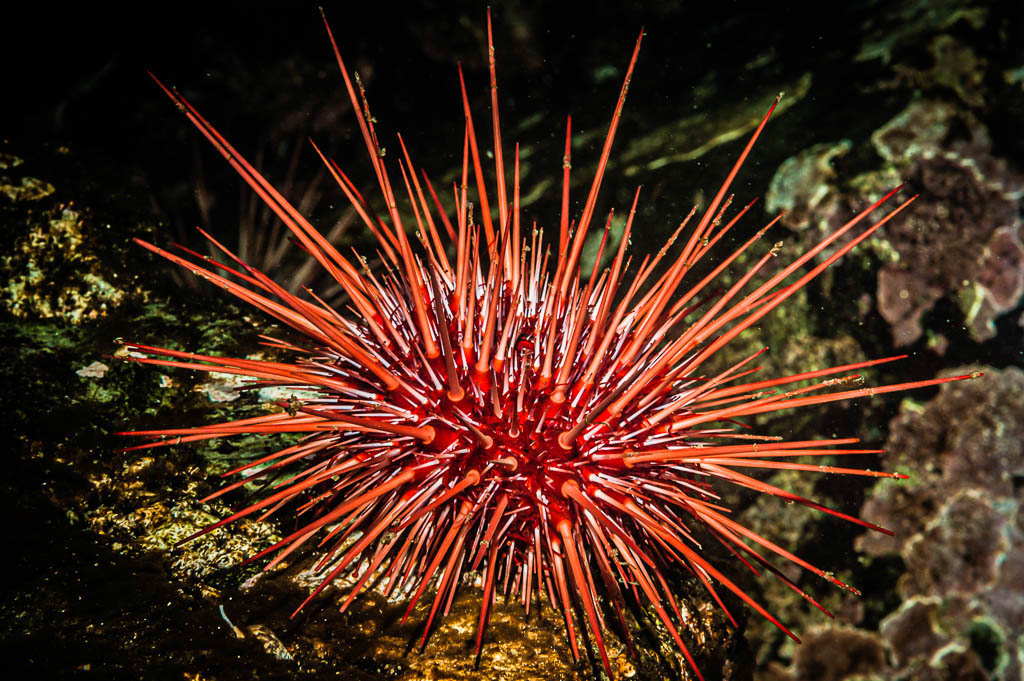“”Behold… one of the most dangerous sea creatures. Giant red sea urchins such as this one thrive in British Columbia’s Emerald Sea. I have never punctured myself or stepped on one of these sea urchins during my entire diving career. But those black sea urchins with the long, fine, needle-like spines found in the tropics… I accidentally stepped on one when we had to walk ashore in waist-deep water from the dive boat after returning from a dusk dive. And man…did that hurt! The broken spines eventually work their way out of your skin over several weeks…but that initial piercing… ouch!!“”
Jett Britnell
The red sea urchin is a sea urchin that can be found from Alaska to Baja California in the northeastern Pacific Ocean. It lives in shallow waters from the low-tide line to more than 280 m (920 ft) deep, and is most commonly found on rocky shores protected from extreme wave action in areas where kelp is available.
Sharp spines cover the entire spherical body of a sea urchin. These spines develop on the animal’s hard shell, known as the “test.” Its colour ranges from red to dark burgundy. Albino specimens are uncommon. It has a mouth on the underside that is surrounded by five teeth. The body of a sea urchin changes from bilateral to radial symmetry during larval development.
This animal has a bottom (oral) surface mouth with special jaws. It feeds on seaweeds and algae that it scrapes and tears up from the sea floor. Urchin larvae use cilia bands to capture food from the water column during development.
Sea urchins are commonly found in groups of five to ten. They have the ability to regenerate spines that have been lost. Lifespans frequently exceed 30 years, and scientists have discovered specimens that are over 200 years old. Red sea urchins are notoriously voracious kelp eaters who contribute to the devastation of kelp beds by forming grazing fronts. Urchin grazing pressure is an important link in a trophic cascade commonly observed along North America’s west coast, in which sea otter predation influences urchin abundance, which in turn influences kelp devastation.
Spawning season is from June to September. Eggs are fertilized externally while floating in the ocean, and planktonic larvae spend about a month in the water column before settling on the sea floor and metamorphosing into juvenile urchins. Chemical cues are used by these juveniles to locate adults.
Photo Credit and Quote Courtesy Jett Britnell
Follow Jett’s Dive Adventures on Facebook, Instagram and Twitter





